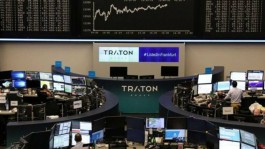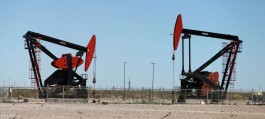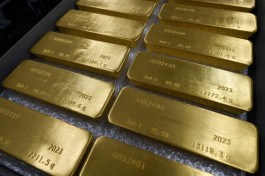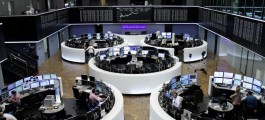Gold prices rose to the highest level in a week during these moments of trading today, Thursday, coinciding with the decline in the dollar index, as investors evaluated somewhat balanced comments from the Chairman of the US Federal Reserve, Jerome Powell, after a widely expected interest rate hike.
Yesterday, Wednesday, the Federal Reserve raised the main interest rate to the highest level since 2001 in the face of inflation, indicating the possibility of raising it more later.
The bank set the main overnight rate at a range of 5.25% to 5.5%. The statement accompanying the announcement left the door open for another increase.
Gold and the dollar now
Gold futures rose 0.44% to $1,979 an ounce.
While spot contracts rose by 0.35% to 1978 dollars an ounce, as it recorded its highest level since July 20.
On the other hand, the dollar index fell by 0.11% to 100,532 points.
gold when settling yesterday
Gold prices rose at settlements, on Wednesday, ahead of the US Federal Reserve's interest rate decision.
And reinforced the gains of the yellow metal during yesterday’s trading, the decline in the dollar index, with expectations that the Federal Reserve will raise interest rates for the last time after inflation slowed to 3% during last June, which is equivalent to a third of what it was a year ago.
JP Morgan Bank expects gold prices to rise above $2,000 an ounce by the end of this year, to reach $2,175 an ounce during the last quarter of 2024, in light of expectations of a mild recession in the United States before the Federal Reserve begins monetary easing. As reported by Bloomberg.
Upon settlement, gold futures for August delivery rose 0.3%, or $6.4, to $1,970.1 an ounce.
fluctuations in gold
Gold prices could be volatile due to the Fed's readiness for another rate hike this year, with bullion likely to see a slight uptick, said Brian Lan of GoldSilver Central, in Singapore, adding that it all depends on upcoming data.
The Federal Reserve raised interest rates by a quarter of a percentage point on Wednesday, highlighting that another 25 basis point increase could be in September based on upcoming data. However, Powell indicated that they no longer expect the economy to enter a recession.
Gold is very sensitive to rising interest rates because it increases the opportunity cost of holding non-yielding bullion.
Meanwhile, the dollar index fell, which supports bullion as a weaker dollar makes gold cheaper for holders of other currencies.
Later in the day, the United States is expected to report that GDP increased at an annualized rate of 1.8% in the second quarter, down from 2% in the first quarter. In addition to the market's anticipation of the US unemployment benefits data.
Investors will also focus on the European Central Bank's policy decision later in the day, when the bank is expected to raise interest rates for the ninth time and then take a data-driven approach instead.
The Fed and raise interest
Federal Reserve Chairman Jerome Powell said that inflation in America is still well above the US Fed's target.
Powell said in a press briefing after the decision to raise interest, yesterday, Wednesday: The process of reducing inflation to two percent still needs a long time.
The US Central Bank said that raising the rate by a quarter of a percentage point raises the basic lending rate to between 5.25 percent and 5.50 percent, adding that it will continue to evaluate additional information and its implications for monetary policy.
The rate-setting Federal Open Market Committee adopted a similar tone when it voted to keep rates steady in June, and the latest statement indicates that policymakers are considering another freeze at their next meeting in September.
However, the Federal Reserve also indicated that it will evaluate a series of data when determining the size of additional fiscal tightening, which indicates that it expects to tighten monetary policies later.
We haven't made a decision about future meetings, and we're dealing with the data available at each meeting separately, according to Powell.
Jerome Powell stressed that the path of reducing inflation is likely to lead to lower growth in the economy and a decline in the labor market in the United States.






































